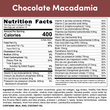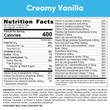The Side Effects of GLP-1 Prescription Drugs and Natural Ways to Boost GLP-1
Semaglutide belongs to the class of glucagon-like peptide-1 (GLP-1) receptor agonists, which mimic the action of the natural hormone GLP-1. These prescription drugs have rapidly gained popularity in managing obesity due to their ability to regulate blood sugar levels and promote weight loss. However, like any medication, they come with potential side effects. Let’s explore some of them now:
Side Effects of Semaglutide GLP-1
- Gastrointestinal Issues: One of the most commonly reported side effects of semaglutide and other GLP-1 agonists is gastrointestinal discomfort. This can manifest as nausea, vomiting, diarrhea, and abdominal pain1. These symptoms can be severe in some cases, leading to not consuming adequate food and even discontinuation of treatment.
- Pancreatitis: There have been reports of pancreatitis, inflammation of the pancreas, associated with the use of GLP-1 receptor agonists, including semaglutide2. While the risk is relatively low, it is a serious concern, particularly for individuals with a history of pancreatitis.
- Thyroid C-Cell Tumors: In preclinical studies, semaglutide has been associated with an increased risk of thyroid C-cell tumors in rodents3. While the relevance of these findings to humans is unclear, it is a potential safety concern that warrants further investigation.
- Muscle Loss: A lesser-known but significant side effect of semaglutide GLP-1 drugs is muscle loss. While the mechanism behind this is not fully understood, studies have shown that GLP-1 receptor activation may lead to significant muscle atrophy and weakness4. This can have serious metabolic implications for individuals, especially the elderly, who are already at risk of sarcopenia (age-related muscle loss).
Natural Ways to Boost GLP-1 Levels:
Given the potential side effects of semaglutide and other GLP-1 prescription drugs, many individuals may seek alternative methods to naturally boost GLP-1 levels in the body. Here are five evidence-based strategies:
- Protein-Rich Foods: Including protein in meals can also stimulate GLP-1 secretion and promote satiety. Foods like beef, fatty fish and eggs are good sources of protein that can help regulate blood sugar levels and curb cravings. Aim to include a serving of protein with each meal to support healthy GLP-1 production and maintain metabolic balance5.
- Regular Exercise: Physical activity has numerous health benefits, including its ability to enhance GLP-1 secretion. Both aerobic exercise and resistance training have been shown to increase GLP-1 levels in the body6. Aim for at least 150 minutes of moderate-intensity exercise per week, combined with strength training exercises.
- Intermittent Fasting: Intermittent fasting, which involves cycling between periods of eating and fasting, has gained popularity for its potential health benefits. Studies have shown that fasting can increase GLP-1 secretion, which may contribute to improved glucose metabolism and weight management7.
- Probiotics: The gut microbiota plays a crucial role in regulating GLP-1 secretion. Probiotic supplements containing beneficial bacteria, such as Lactobacillus and Bifidobacterium strains, have been shown to increase GLP-1 levels in some studies8. Incorporating probiotic-rich foods like unsweetened yogurt, kefir, and sauerkraut into your diet may also have a beneficial effect on GLP-1 production.
- Berberine Supplementation: Berberine, a compound found in several plants, has been studied for its potential to enhance GLP-1 secretion. Research suggests that berberine supplementation can improve insulin sensitivity and glucose metabolism, partly by increasing GLP-1 levels9. Aim for a daily dosage of at least 500mg of berberine, under the guidance of a healthcare professional.
Conclusion
While semaglutide GLP-1 prescription drugs offer benefits, they are not without significant risks and potential side effects. Fortunately, there are natural ways to boost GLP-1 levels in the body, which may offer an alternative or complementary approach to managing blood sugar levels and promoting weight loss. By incorporating dietary and lifestyle changes, individuals can support their overall health while minimizing the potential risks associated with pharmaceutical interventions.
References
- FDA. (2021). Highlights of Prescribing Information: Ozempic (semaglutide).
- Monami, M., Nreu, B., Marchionni, N., & Mannucci, E. (2014). A meta-analysis of serious adverse events reported with exenatide and liraglutide: acute pancreatitis and cancer. Diabetes Research and Clinical Practice, 105(2), 267–276.
- Rosenstock, J., Allison, D., Birkenfeld, A. L., Blicher, T. M., Deenadayalan, S., Jacobsen, J. B., . . . & Marso, S. P. (2018). Effect of additional oral semaglutide vs sitagliptin on glycated hemoglobin in adults with type 2 diabetes uncontrolled with metformin alone or with sulfonylurea: The PIONEER 3 randomized clinical trial. JAMA, 319(15), 1580-1590.
- Andersen, A., Lund, A., Knop, F. K., Vilsbøll, T., & Gluud, L. L. (2018). The clinical effect of glucagon-like peptide-1 receptor agonists on cardiovascular risk: A systematic review and meta-analysis of randomized controlled trials. Diabetes, Obesity and Metabolism, 20(3), 0-0.
- Gannon, M. C., & Nuttall, F. Q. (2006). Control of blood glucose in type 2 diabetes without weight loss by modification of diet composition. Nutrition & Metabolism, 3(1), 16.
- Holst, J. J. (2013). The physiology of glucagon-like peptide 1. Physiological Reviews, 87(4), 1409-1439.
- Ahren, B. (2009). Islet G protein–coupled receptors as potential targets for treatment of type 2 diabetes. Nature Reviews Drug Discovery, 8(5), 369–385.
- Samah, S., Ramasamy, K., & Lim, S. M. (2017). Probiotics for the management of type 2 diabetes mellitus: A systematic review and meta-analysis. Diabetes Research and Clinical Practice, 131, 140–152.
- Dong, H., Wang, N., Zhao, L., Lu, F., & Berberine in the treatment of type 2 diabetes mellitus: A systemic review and meta-analysis. Evidence-Based Complementary and Alternative Medicine, 2012, 591654.
This article is for informational and educational purposes only. It is not, nor is it intended to be substitute for professional medical advice, diagnosis, or treatment and should never be relied upon for specific medical advice.


























 Free Shipping - AUSPOST
Free Shipping - AUSPOST